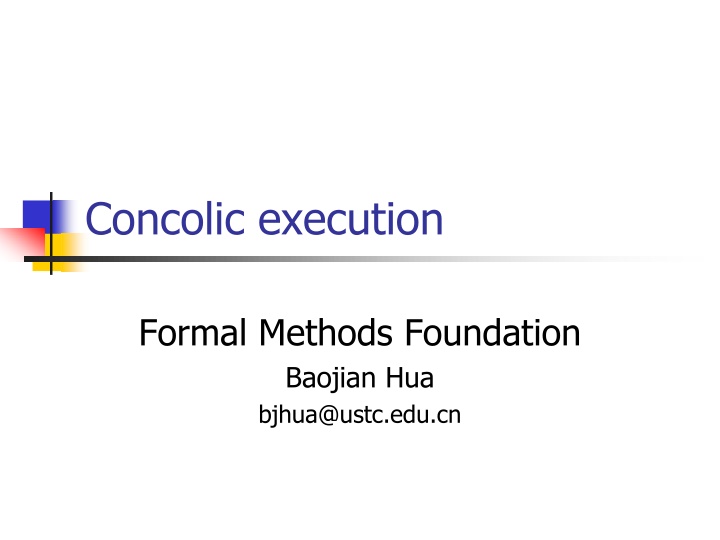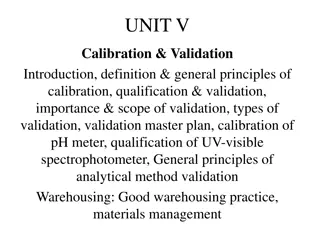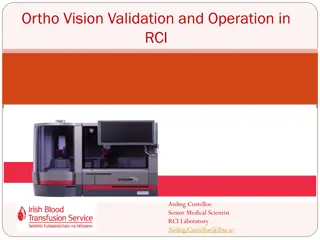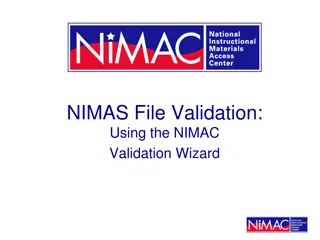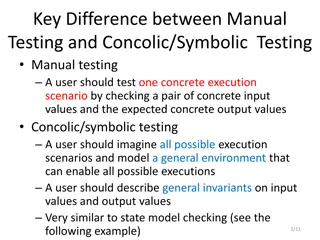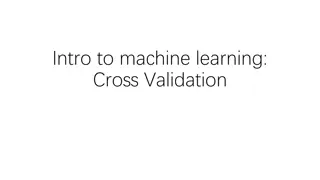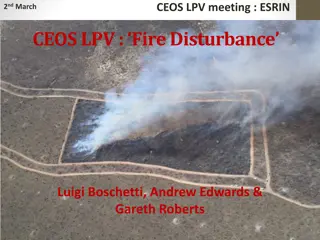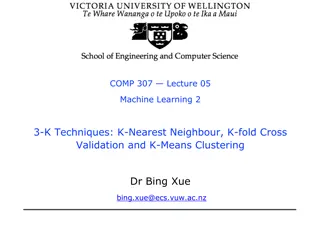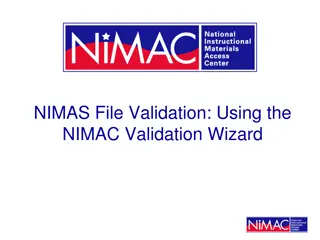Concolic Execution in Program Validation
Concolic execution is a technique that combines concrete and symbolic methods in program testing. Learn about its foundations, challenges, and steps involved in this advanced testing approach for effective program validation. Understand the limitations faced by modern solvers and the evolution of concolic execution since its inception in the mid-2000s.
Download Presentation

Please find below an Image/Link to download the presentation.
The content on the website is provided AS IS for your information and personal use only. It may not be sold, licensed, or shared on other websites without obtaining consent from the author.If you encounter any issues during the download, it is possible that the publisher has removed the file from their server.
You are allowed to download the files provided on this website for personal or commercial use, subject to the condition that they are used lawfully. All files are the property of their respective owners.
The content on the website is provided AS IS for your information and personal use only. It may not be sold, licensed, or shared on other websites without obtaining consent from the author.
E N D
Presentation Transcript
Concolic execution Formal Methods Foundation Baojian Hua bjhua@ustc.edu.cn
Spectrum of program validation methods Today s topic
Recap: path explosion // How to test the following program effectively? int foo(){ if(e1) if(e11) ; else ; else if(e21) ; else ; } e1 e1 e1 e11 e21 e1 e11 e1 e21 e1 e11 e1 e21 e e e e With nested if statements of depth N, the number of possible paths are ?(2?).
Recap: Environment modeling // lib() is a library function: int foo(int n){ if(e){ x = lib(n); }else{ x = 2*n-4; } return 1/x; } e e e lib() ... If we don t establish a symbolic model for the lib() function, we cannot check the true branch symbolically. But we can still executes that branch concretely! So the symbolic model for the library function is just to improve the precision!
Recap: Solver limitation // sample function: int foo(int x, int y){ m = x*x*x; if(m==y){ assert( ); }else{ ; } return 1; } m==y e e ... The path condition is: x*x*x==y Generally, beyond the capability of modern solvers.
Concolic execution Concolic = Concrete + symbolic Initially developed around 2005: DART: Directed Automated Random Testing, by Patrice Godefroid; Nils Klarlund; Koushik Sen, 2005 CUTE: a concolic unit testing engine for C, by Koushik Sen; Darko Marinov; Gul Agha, 2005
Concolic Execution Steps Step #1: generate random concrete input and symbolic input Step #2, run program with the two inputs maintain the concrete+symbolic states For branching, generate path conditions just like in the symbolic execution but don t fork(), only go to feasible path After one run, negate the result PCs, send them to solver, to get other concreate input Go to step #2, re-run the program
Architecture programs with concrete + symbolic inputs model concolic executor path conditions/ obligations solver
Concolic execution // Step #1: construct random values as // function input: int foo(int x, int y){ int z = x+y; if(x==32467289) return x/y; else return 0; } Varia ble x y value sym. value x y 1 1
Concolic execution // Step #2: execute the program with both the // concrete and symbolic values, maintaining the // program state: int foo(int x, int y){ int z = x+y; if(x==32467289) return x/y; else return 0; } Varia ble x y z value sym. value x y x+y 1 1 2
Concolic execution // For branch, the executor branches according to // the concreate value, and we add a path // condition to the // target branch: int foo(int x, int y){ int z = x+y; if(x==32467289) return x/y; else return 0; } Varia ble x y z value sym. value x y x+y 1 1 2 x != 32467289 if x != 32467289 x/y 0
Concolic execution // After run and get the PCs, we negate the PCs // and send it to solver, to get new inputs: int foo(int x, int y){ int z = x+y; if(x==32467289) return x/y; else return 0; } x == 32467289 Varia ble x y z value sym.va lue x y x+y 32467289 1 32467290 x == 32467289 y==1 if x != 32467289 x/y 0
Concolic execution // With the new path condition and obligations, // we can generate final constraints: int foo(int x, int y){ int z = x+y; if(x==32467289) return x/y; else return 0; } x == 32467289 x == 32467289 y==0 Varia ble x y z value sym.va lue x y x+y 32467289 1 32467290 x == 32467289 y==1 if x/y 0 And the model: [x == 32467289, y==0] y==0
Concolic execution // Generate new input, and rerun the program: int foo(int x, int y){ int z = x+y; if(x==32467289) return x/y; else return 0; } Varia ble x y z value sym.va lue x y x+y x == 32467289 y==0 32467289 0 32467289 if We run the program 3 rounds in total! x == 32467289 x == 32467289 y==0 x/y 0 Trigger the DivideByZero ! y==0
The general form // Conceptually, we negate one of PCs one time: int foo(int x, int y){ if(b1) if(b2) if( ) if(bn) return x/y; else ; else ; else ; else return 0; } b1 b1 b2 b1 b2 ... b1 b2 ... bn b1 b1 b1 b2 ... bn y==0 b2 b b1 b2 b1 b2 ... bn x/y b b b
Vari able value sym. value x 2 x Example y 2 y m 8 x*x*x m!=y // sample function: int foo(int x, int y){ m = x*x*x; if(m==y){ assert( ); }else{ ; } return 1; } Vari able value sym. value x 2 x y 2 y m 8 x*x*x 8 The path cond: x*x*x!=y we negate it and send to solver (Z3): x*x*x==y but if we found this is unsolvable, we can weaken this by replace the symbolic value of m with its concreate value! Thus we have this (weakened) PC: 8 == y we regenerate new input, and restart the execution!
Vari able value sym. value x 2 x Example y 8 y m 8 x*x*x m!=y m==y // sample function: int foo(int x, int y){ m = x*x*x; if(m==y){ assert( ); }else{ ; } return 1; } Vari able value sym. value Vari able value sym. value x 2 x x 2 x y 8 y y 2 y m 8 x*x*x m 8 x*x*x 8 The path cond: x*x*x!=y we negate it and send to solver (Z3): x*x*x==y but if we found this is unsolvable, we can weaken this by replace the symbolic value of m with the concreate value! Thus we have this (weakened) PC: 8 == y we regenerate new input, and restart the execution!
Practical issues Path explosion Loops and recursions Environment modeling
#1: Path explosion // The program: int foo(){ if(e1) if(e11) ; else ; else if(e21) ; else ; } e1 e1 e1 e11 e21 e1 e11 e1 e21 e1 e11 e1 e21 e e e e With nested if statements of depth N, the number of possible paths are ?(2?).
#1: Path explosion In concolic execution, the number of paths explored can be controlled, according to: the total number the coverage the timeout etc..
#2: Loops and recursions // Loops introduce non-termination: int sum(int n){ int s = 0, i = 0; while(i<=n){ s = s+i; i = i+1; } return s; } i 0 s 0 n n i<=n e e e s
#2: Loops and recursions // Loops introduce non-termination: int sum(int n){ int s = 0, i = 0; while(i<=n){ s = s+i; i = i+1; } return s; } i 0 s 0 n n i<=n e 0<=n s i 0+1 s 0+0 n n i<=n 0+1<=n i 0+1+2 s 0+0+(0+1) n n i<=n s 0+1+2<=n s No need to finitize the loops.
#3: Environment modeling // lib() is a library function: int foo(int n){ if(e){ x = lib(n); }else{ x = 2*n-4; } return 1/x; } e e e lib() ... If we don t establish a symbolic model for the lib() function, we cannot symbolic check the true branch. But we can still concolic executes that branch! So the symbolic model for the environment is just to improve the precision!
Summary Concolic execution is a more practical (flexible) infrastructure for program testing Many practical tools with many applications
